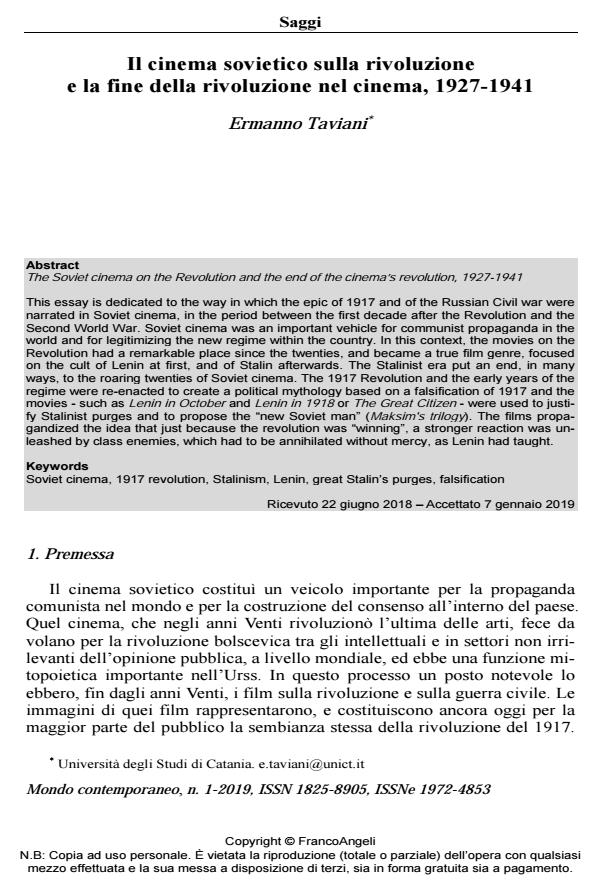The Soviet cinema on the Revolution and the end of the cinema’s revolution, 1927-1941
Journal title MONDO CONTEMPORANEO
Author/s Ermanno Taviani
Publishing Year 2019 Issue 2019/1 Language Italian
Pages 30 P. 5-34 File size 347 KB
DOI 10.3280/MON2019-001001
DOI is like a bar code for intellectual property: to have more infomation
click here
Below, you can see the article first page
If you want to buy this article in PDF format, you can do it, following the instructions to buy download credits

FrancoAngeli is member of Publishers International Linking Association, Inc (PILA), a not-for-profit association which run the CrossRef service enabling links to and from online scholarly content.
This essay is dedicated to the way in which the epic of 1917 and of the Russian Civil war were narrated in Soviet cinema, in the period between the first decade after the Revolution and the Second World War. Soviet cinema was an important vehicle for communist propaganda in the world and for legitimizing the new regime within the country. In this context, the movies on the Revolution had a remarkable place since the twenties, and became a true film genre, focused on the cult of Lenin at first, and of Stalin afterwards. The Stalinist era put an end, in many ways, to the roaring twenties of Soviet cinema. The 1917 Revolution and the early years of the regime were re-enacted to create a political mythology based on a falsification of 1917 and the movies - such as Lenin in October and Lenin in 1918 or The Great Citizen - were used to justify Stalinist purges and to propose the "new Soviet man" (Maksim's trilogy). The films propagan-dized the idea that just because the revolution was "winning", a stronger reaction was unleashed by class enemies, which had to be annihilated without mercy, as Lenin had taught.
Keywords: Soviet cinema, 1917 revolution, Stalinism, Lenin, great Stalin’s purges, falsification
Ermanno Taviani, Il cinema sovietico sulla rivoluzione e la fine della rivoluzione nel cinema, 1927-1941 in "MONDO CONTEMPORANEO" 1/2019, pp 5-34, DOI: 10.3280/MON2019-001001